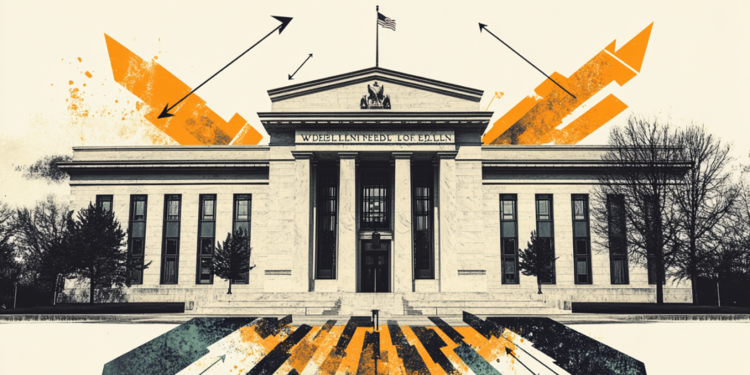Federal Reserve Bank of Cleveland President Beth Hammack said on Wednesday that conditions still support ongoing reductions in the central bank’s balance sheet. Hammack added that she believes some active management of market liquidity via Fed interventions is acceptable to her, per Reuters.
Key quotes
Supports ongoing quantitative tightening (QT), a slower drawdown pace will allow longer process.
Fed’s balance sheet has shrunk from $9T to $6.8T since QT began in 2022.
Money market liquidity still appears abundant.
Supported Fed’s recent slowdown in balance sheet drawdown.
Some volatility in overnight markets is not a bad thing.
Sees possible cases for return to Fed repos depending on market conditions.
There are costs for keeping Fed’s balance sheet too large.
Supports work to strengthen standing repo facility.
Costs of too-large balance sheet include market risk taking.
Does not comment on economic outlook.
There has to be a high bar for Fed to step in to aid markets.
Market should set where term premium stands.
Uncertainty is a big issue in economy, it’s causing businesses to pause.
Economic uncertainty prompting business caution.
We have not seen the need for Fed market intervention.
‘Incredibly high bar’ exists for Fed to step in.
Recent market troubles was risk transfer, markets were functioning.
Natural to see investors shift positions during volatility.
Fed job is not to tell markets what the right price is.
Big uncertainty over the outlook continues to argue for the Fed taking it slow on monetary policy to see how the economy performs.
This is not a good time to be pre-emptive” with monetary policy.
This is a good time to watch and watch” and gather data to determine what the right course of action will be.
Market reaction
At the time of writing, the US Dollar Index (DXY) is trading 0.21% lower on the day to trade at 99.68.
Fed FAQs
Monetary policy in the US is shaped by the Federal Reserve (Fed). The Fed has two mandates: to achieve price stability and foster full employment. Its primary tool to achieve these goals is by adjusting interest rates.
When prices are rising too quickly and inflation is above the Fed’s 2% target, it raises interest rates, increasing borrowing costs throughout the economy. This results in a stronger US Dollar (USD) as it makes the US a more attractive place for international investors to park their money.
When inflation falls below 2% or the Unemployment Rate is too high, the Fed may lower interest rates to encourage borrowing, which weighs on the Greenback.
The Federal Reserve (Fed) holds eight policy meetings a year, where the Federal Open Market Committee (FOMC) assesses economic conditions and makes monetary policy decisions.
The FOMC is attended by twelve Fed officials – the seven members of the Board of Governors, the president of the Federal Reserve Bank of New York, and four of the remaining eleven regional Reserve Bank presidents, who serve one-year terms on a rotating basis.
In extreme situations, the Federal Reserve may resort to a policy named Quantitative Easing (QE). QE is the process by which the Fed substantially increases the flow of credit in a stuck financial system.
It is a non-standard policy measure used during crises or when inflation is extremely low. It was the Fed’s weapon of choice during the Great Financial Crisis in 2008. It involves the Fed printing more Dollars and using them to buy high grade bonds from financial institutions. QE usually weakens the US Dollar.
Quantitative tightening (QT) is the reverse process of QE, whereby the Federal Reserve stops buying bonds from financial institutions and does not reinvest the principal from the bonds it holds maturing, to purchase new bonds. It is usually positive for the value of the US Dollar.

